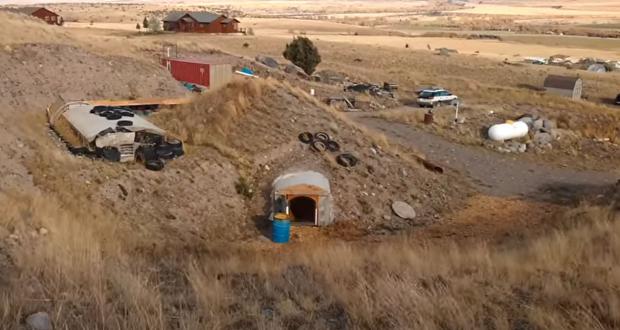
Breaking News
 Massie Introduces Bill to Get US Out of NATO
Massie Introduces Bill to Get US Out of NATO
 Somali Flag Raised Over Vermont School District
Somali Flag Raised Over Vermont School District
 "Kill Babies, Superman"? New CHILDREN'S Book Calls Abortion a "Superpower"
"Kill Babies, Superman"? New CHILDREN'S Book Calls Abortion a "Superpower"
 Gold Warning Issued as New Monetary System Takes Hold
Gold Warning Issued as New Monetary System Takes Hold
Top Tech News
 This tiny dev board is packed with features for ambitious makers
This tiny dev board is packed with features for ambitious makers
 Scientists Discover Gel to Regrow Tooth Enamel
Scientists Discover Gel to Regrow Tooth Enamel
 Vitamin C and Dandelion Root Killing Cancer Cells -- as Former CDC Director Calls for COVID-19...
Vitamin C and Dandelion Root Killing Cancer Cells -- as Former CDC Director Calls for COVID-19...
 Galactic Brain: US firm plans space-based data centers, power grid to challenge China
Galactic Brain: US firm plans space-based data centers, power grid to challenge China
 A microbial cleanup for glyphosate just earned a patent. Here's why that matters
A microbial cleanup for glyphosate just earned a patent. Here's why that matters
 Japan Breaks Internet Speed Record with 5 Million Times Faster Data Transfer
Japan Breaks Internet Speed Record with 5 Million Times Faster Data Transfer
 Advanced Propulsion Resources Part 1 of 2
Advanced Propulsion Resources Part 1 of 2
 PulsarFusion a forward-thinking UK aerospace company, is pushing the boundaries of space travel...
PulsarFusion a forward-thinking UK aerospace company, is pushing the boundaries of space travel...
 Dinky little laser box throws big-screen entertainment from inches away
Dinky little laser box throws big-screen entertainment from inches away
 'World's first' sodium-ion flashlight shines bright even at -40 ºF
'World's first' sodium-ion flashlight shines bright even at -40 ºF
Got abandoned bunker network. They're building underground village

When Dean Anderson found one for sale by owner, he snapped it up for a good price since it was filled with 45,000 pounds of dried food.
"Basically to me it was like a million to a million and a half dollars worth of cement stuck underground," explains Anderson. "I was thinking all this leftover stuff, gone, they're going to bury it, so I could buy it for next to nothing and turn it into something cool."
He's now in the process of converting it into a series of apartments. The decontamination chamber alone is now a two bedroom apartment. The giant cement dome goes three stories deep. He has already created an apartment and huge communal living space on the top floor, after cutting holes in the sides to open it up to the views (they are 7 miles from Yellowstone).
There are still two floors of building to complete, but Anderson has not just created more living space, he has also turned food storage space into a source for geothermal heating and cooling.
Anderson has done all the work with a crew of young men in recovery. He believes in physical labor as therapy and years ago "an old man" helped him in the same way. Now 30-years-sober, Anderson has spent years replicating this work-therapy on his construction projects. He trains and pays the men who are often just off the street or out of prison in hopes that they will follow his path. "We've had 40 kids through here. The bulk of whom are clean and healthy and doing well."



